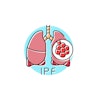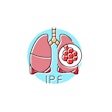
In 2021, the U.S. Preventive Services Task Force (USPSTF) made updates to its guidelines on lung cancer screenings. Since then, eligibility criteria have expanded to include adults between the ages of 50 and 80 with a smoking history of 20 or more pack-years. The previous guidelines defined eligibility as adults aged 55 to 80 years with a smoking history of 30 or more pack-years.
This is according to a new research letter, “USPSTF Lung Cancer Screening Guidelines and Disparities in Screening Adherence,” published in JAMA Oncology. Researchers examined data from the Behavioral Risk Factor Surveillance System from 2019 to 2023 to understand how the revised guidelines impacted screening uptake. Prior to the 2021 updates, 15.4% of the 17,101 participants were screened for lung cancer. Following the guidelines, this increased to 47.1%.
LaShae D. Rolle, MPH, a PhD student at the University of Miami Miller School of Medicine in Florida, led the research team. In the analysis, she and her colleagues detected a significant increase in screening odds as a result of the USPSTF guidelines (adjusted odds ratio, 4.66).
Factors such as being a rural resident, lacking health insurance coverage and not having a primary physician decreased screening odds (adjusted odds ratios, 0.73, 0.28 and 0.71, respectively). Researchers did not observe significant associations for sex, race and ethnicity, income or education levels before and after the guideline updates.
“These findings underscore the importance of targeted interventions to address structural barriers in rural and underserved populations,” wrote the authors.






















